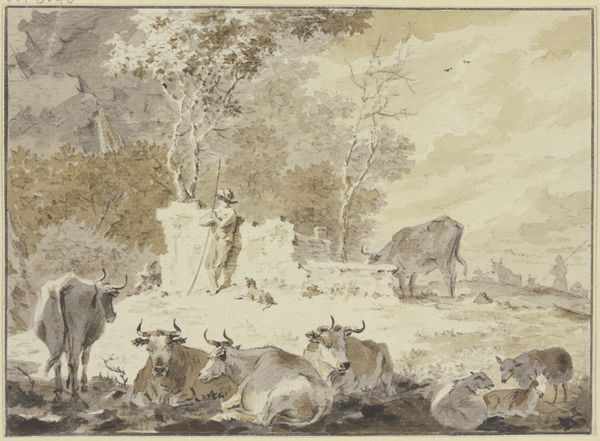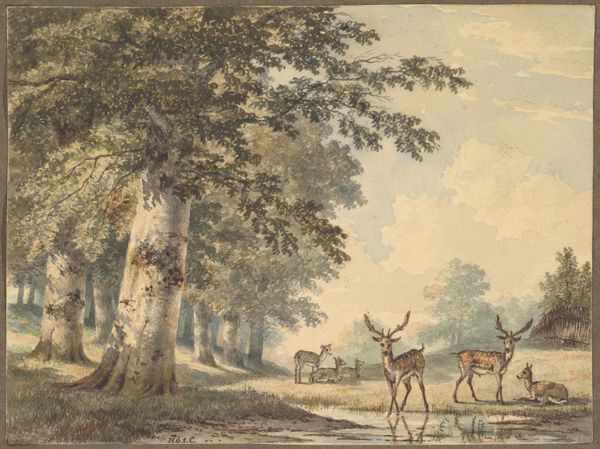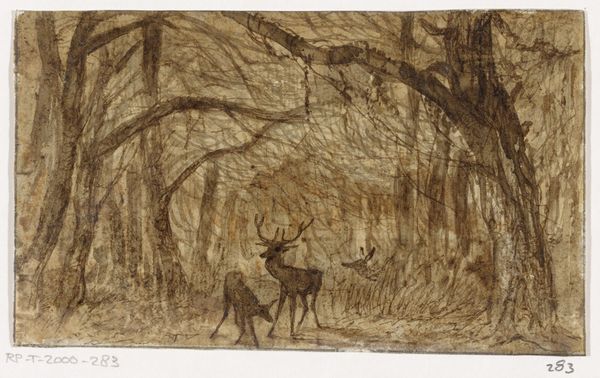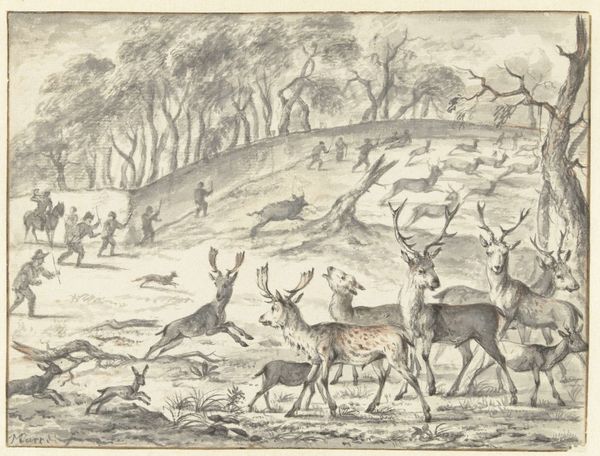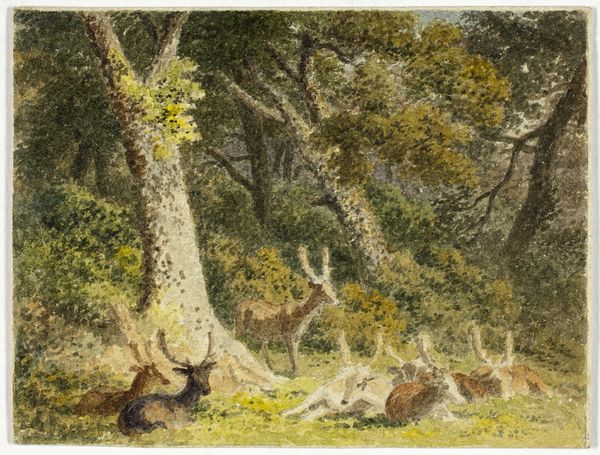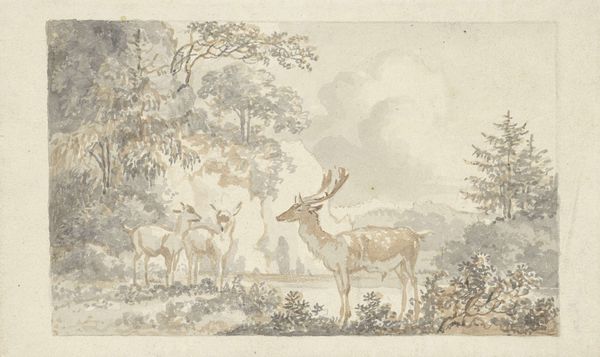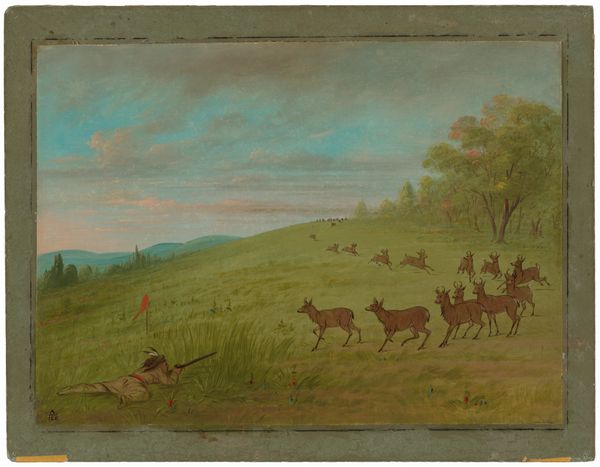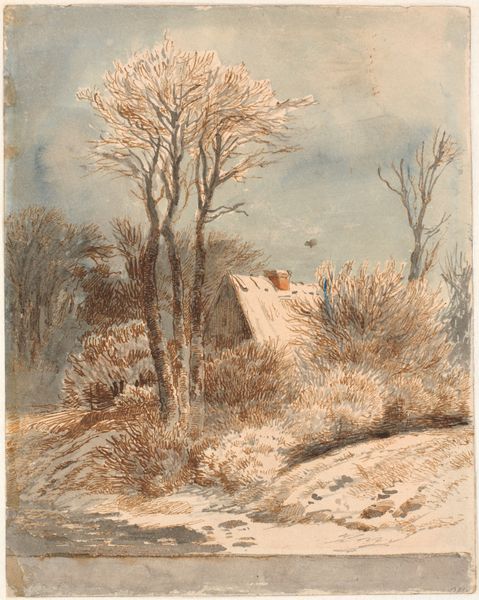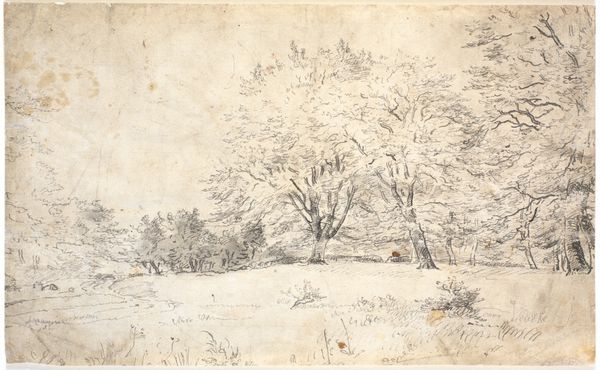
Dimensions: Sheet: 4 7/16 x 5 15/16 in. (11.3 x 15.1 cm)
Copyright: Public Domain
Editor: Here we have Hendrik Gerrit ten Cate's "Deer under Beech Trees in Summer," created in 1853. It's a lovely watercolor and ink painting. I’m struck by its tranquility; the deer seem so at peace in their woodland setting. How do you interpret this work? Curator: It invites us to consider the Romantic era’s fascination with nature, doesn't it? These beech trees, towering and venerable, become symbolic of resilience and endurance. Consider how the deer are depicted—not merely as fauna, but almost as spiritual inhabitants, mirroring humanity’s own quest for harmony with the natural world. Do you see the cultural memory embedded within? Editor: I hadn't thought about it that way. I was just admiring the details in the trees and the soft light. So, you're saying the artist is using the deer to symbolize something more? Curator: Precisely! Deer, throughout history, have been potent symbols. Often linked to gentleness, grace, but also to a certain untamed wildness. The artist here seems to be invoking those layers of meaning. Note how the herd is positioned - a protective dynamic which plays into human empathy. Think of childhood stories, mythologies, what springs to mind? Editor: Bambi, actually. And now I see what you mean. It makes the painting more poignant. Curator: Indeed. The imagery taps into a deeper cultural reservoir. We're drawn to the visual symbols as both witnesses and participants in the continuity of nature. What does this imply for our understanding of self and society? Editor: I see this painting differently now. It’s not just a pretty landscape, but a reflection on our relationship with nature and its enduring symbolism. Thanks for pointing that out. Curator: My pleasure. It’s these layers of cultural and psychological weight that give art its timeless appeal.
Comments
No comments
Be the first to comment and join the conversation on the ultimate creative platform.
